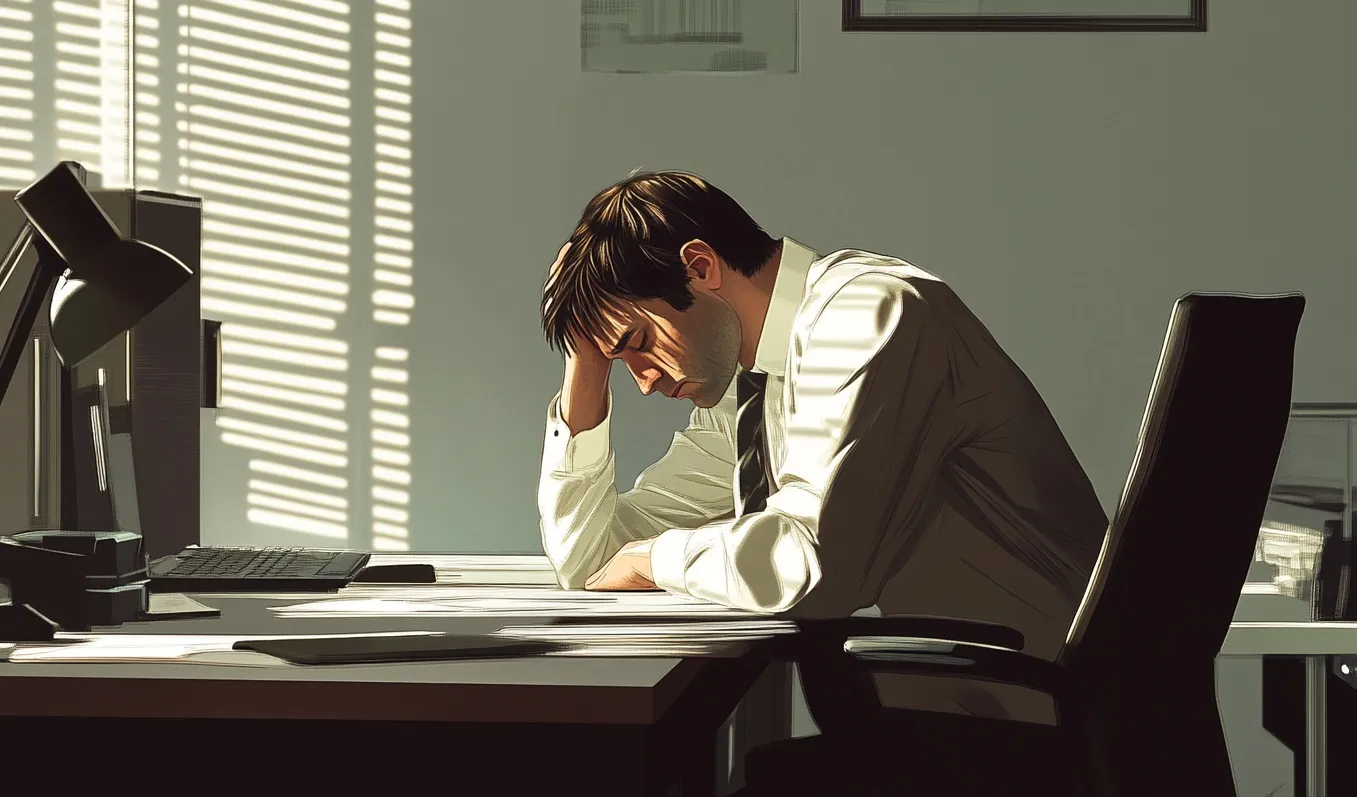Recognizing signs of professional burnout and coping with it
Occupational burnout represents a special form of work-related stress. It is a condition of physical and emotional exhaustion, accompanied by profound dissatisfaction and loss of personal identity. Burnout is not considered a medical diagnosis in the traditional sense. Many experts view it as a complex condition that can conceal other problems, including depression or personal characteristics of the individual.

The burnout process develops gradually, accumulating negative emotions as the individual's internal resources are depleted. The modern pace of life, especially in big cities, creates a fertile ground for the development of this syndrome. Daily stressful situations, high work demands, and the need for constant communication with many people can emotionally exhaust even the most stable individuals.
Table of Contents
Risk Groups for Occupational Burnout
The most commonly experiencing occupational burnout are those whose work requires intensive communication. This includes executives from various levels, sales managers, healthcare and social workers, teachers, counselors, and law enforcement officers. Their work necessitates constant emotional involvement and a high level of empathy, which over time can deplete internal resources.
A particular at-risk group consists of people trying to balance family life and career. The constant guilt towards the family due to excessive workloads, combined with work-related stress, creates additional emotional strain. Also, employees who fear job loss or are insecure about their professional competence are within the risk zone.
Urban dwellers are subject to a specific burnout risk due to the necessity of constant interaction with many strangers, long commutes, and the fast pace of life. New professionals facing high expectations may "burn out" after just six months if they cannot withstand the pressure of responsibility and the need for quick adaptation.
Signs of Occupational Burnout
The symptoms of occupational burnout manifest both on a psychophysical and social-psychological level. On a physical level, a person may experience constant fatigue, sleep disorders, headaches, and digestive problems. There is often a general decrease in energy levels, chronic fatigue develops, which does not dissipate even after longer periods of rest.
In the social-psychological realm, burnout is expressed through apathy, passivity, and general indifference to events. The individual may develop increased irritability, become cynical and aggressive. A characteristic feature is the constant desire for breaks and rest during the workday, the onset of boredom and melancholy. Many report difficulties with concentration and a strong need for solitude after work.

Causes of Occupational Burnout
Occupational burnout often arises from chronic stress and the gradual depletion of emotional-energetic resources. A primary cause is the lack of control over the work situation: the inability to influence working hours, task volume, or resource distribution. Unclear work expectations and vague job descriptions also create a breeding ground for the development of the burnout syndrome.
A toxic work environment with office conflicts, an unfriendly atmosphere, or excessive supervision by superiors can significantly accelerate the burnout process. Monotony or, conversely, chaos at work requires constant tension to maintain focus, leading to rapid depletion of internal resources.
Strategies for Overcoming Occupational Burnout
Burnout is a treatable condition with proper handling. The first step is recognizing the problem and openly expressing emotions. Personal experiences should not be concealed but discussed with supervisors or colleagues to find solutions to encountered difficulties.
Physical activity is significant in overcoming burnout. Regular exercise, walks in the fresh air, healthy nutrition, and sufficient sleep help restore the organism's physical and emotional resources. Special attention should be dedicated to organizing regular breaks – both short-term during the workday and long-term on weekends and during holidays.
Professional development and broadening horizons can be effective antidotes to burnout. Exchanging ideas with representatives from other professions, participating in training programs and conferences help gain new perspectives and rekindle interest in the work. In some cases, a change in position or even career may be necessary if the current job no longer provides satisfaction.
Developing creative interests and hobbies outside work creates the necessary balance and helps switch off from work-related issues. Regular engagement in favorite activities, whether painting, dancing, or gardening, instills a sense of stability and self-confidence. Learning relaxation techniques, meditation, or other self-regulation methods helps cope better with stress and prevent new burnout episodes.
From personal experience: My journey through burnout
As the author of this article, I have experienced burnout multiple times. You may know this: a state that pulls the ground out from under you - you no longer understand why you are working, what you want to achieve, and you feel disappointed with your life. But here lies the key: it is a psychological state that you can overcome.
My personal recipe against burnout is simple but effective:
First: When you work hard mentally, you also need to train hard physically. Martial arts are ideal for this. During training, you distract yourself, meet people, and your mind focuses on planning the next move - not on work. While your muscles work, your mind recovers. Your heart pumps, your body is supplied with oxygen. Instead of sleepless nights, you sleep like a baby. Your self-confidence grows, and your work performance improves as well.
Second: Overtime is sometimes necessary - but it must be your conscious decision. If you work longer, do it out of your own drive, because you want to achieve a specific goal. This perspective changes everything: it is your own decision, no one else bears the responsibility.
Third and most importantly: You need a clear goal in mind. If you are only working for work's sake, you are heading down a one-way street towards burnout. But if you are working for your family, you find a deeper meaning in it. That makes the crucial difference.
Think about it - it could change your life!
Summary: Understanding and coping with burnout
Basic characteristics of burnout:
- A state of complete emotional and physical exhaustion
- A form of work-related overload
- A gradual process with psychological and physical consequences
Particularly vulnerable groups of individuals:
- Individuals in communication-intensive professions
- Executives and managers
- Employees in the healthcare and social sectors
- City dwellers with long commutes to work
- Working individuals with disrupted work-life balance
Typical warning signs:
- Chronic exhaustion and sleep disturbances
- Emotional detachment
- Cynical attitude towards work
- Difficulty concentrating
- Physical complaints such as headaches
Recommended coping strategies:
- Regular physical activity
- Scheduling sufficient recovery periods
- Building a supportive social environment
- Developing personal interests outside of work
- Seeking professional support if needed
Overcoming burnout is a process that requires time and various measures. The first important step is recognizing and accepting the situation. Successful recovery is facilitated by professional guidance and a supportive personal environment. Preventive measures and regular self-monitoring can help prevent a recurrence of burnout.
Learn more about a healthy balance in my article Work-Life-Balance. A must-read for all those who want to wisely distribute their energy!
From Vitalii Shynakov
